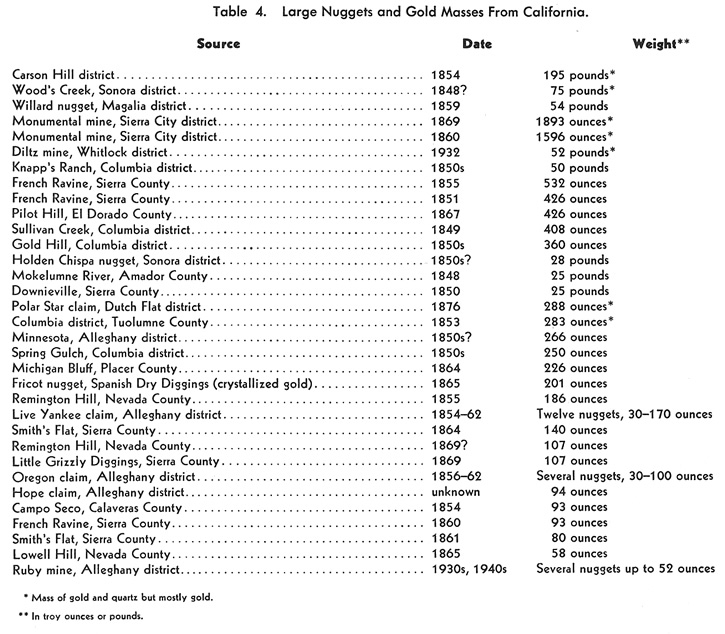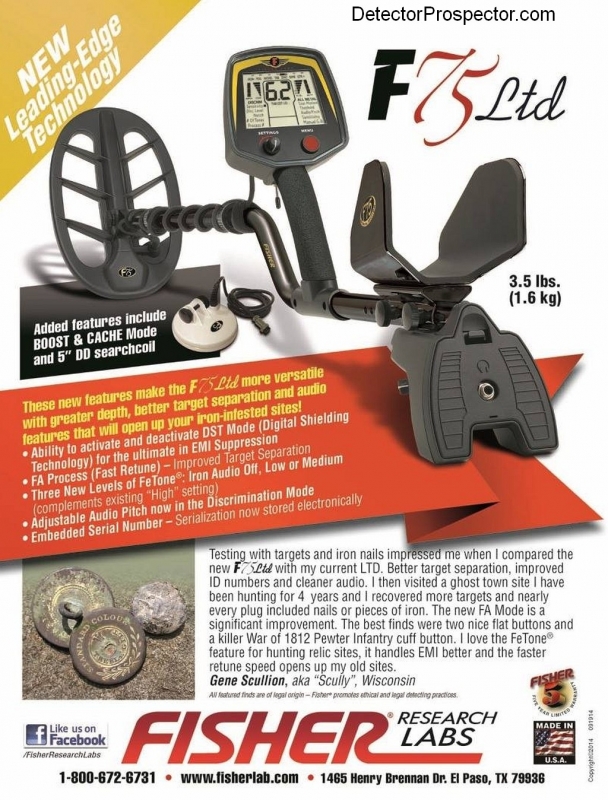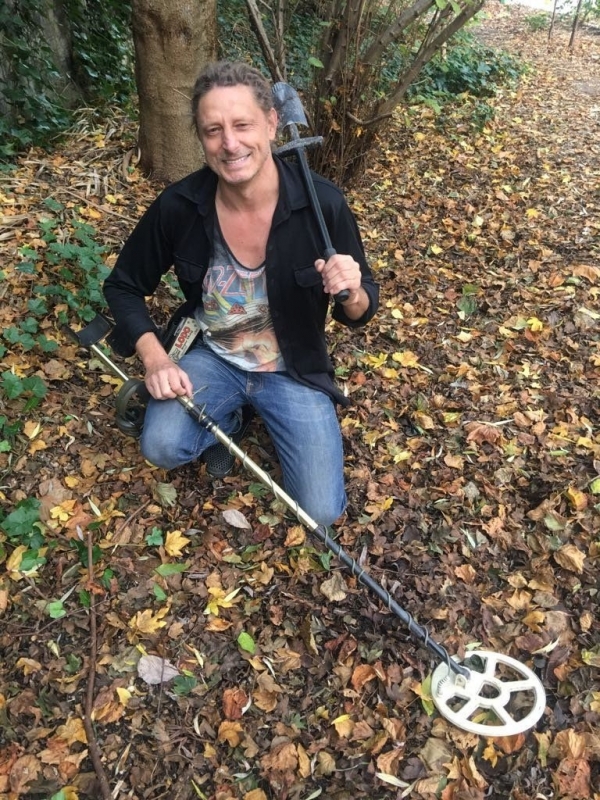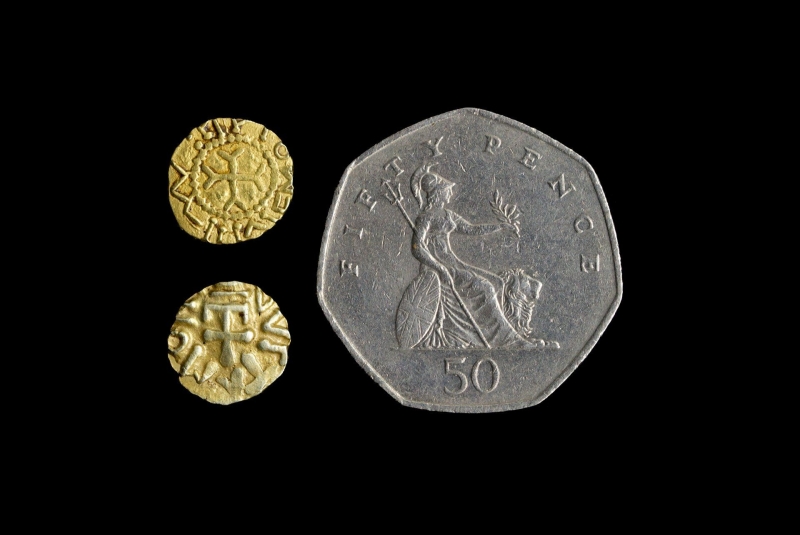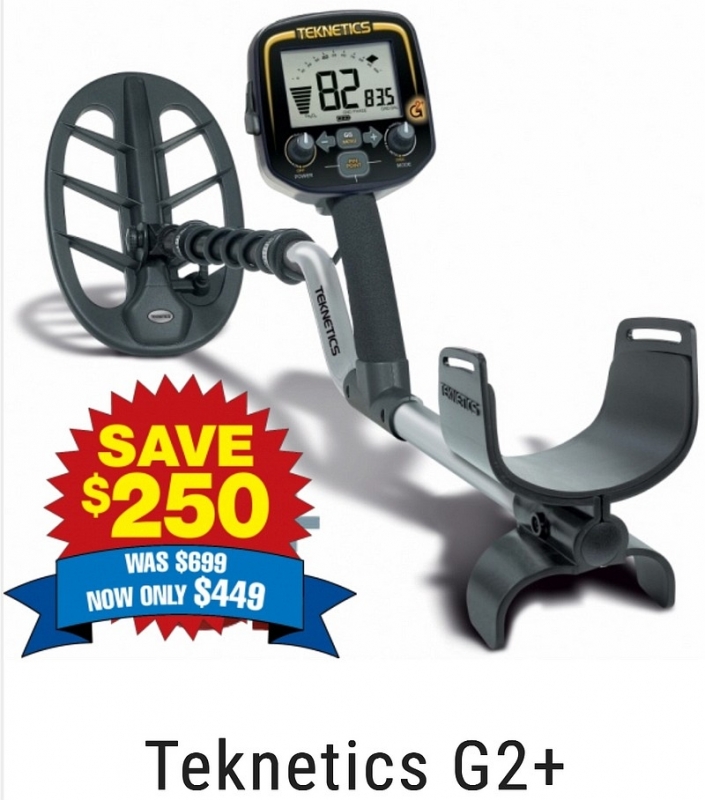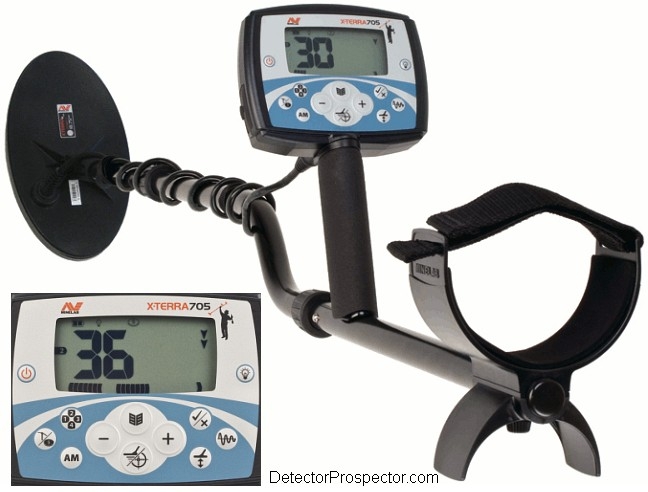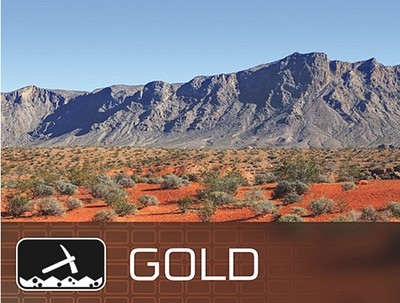-
Posts
19,761 -
Joined
Content Type
Forums
Detector Prospector Home
Detector Database
Downloads
Everything posted by Steve Herschbach
-

Gold Hunting Shop In Ca?
Steve Herschbach replied to Highlandhowler's topic in Detector Prospector Forum
Please link to things instead of using secret codes. I added links to the last post. Thanks! -

Newest Big Nugget Found..........
Steve Herschbach replied to johnedoe's topic in Detector Prospector Forum
That is a May 2017 article about a find made in 2014, the Butte Nugget. It was covered on the forum. I have met the gentleman that found it. It was a legit find, and nuggets of this size were not that rare in California as to be discounted out of hand. Great nugget, but not a recent find. From Gold Districts of California, Bulletin 193 California Division of Mines and Geology 1976 -

Fisher F75+ Announced
Steve Herschbach replied to Steve Herschbach's topic in First Texas - Bounty Hunter, Fisher & Teknetics
Unless anyone can find out anything different it does appear First Texas has reissued the F75 LTD2 (with DST) as the F75+ at a lower price point. The F75 was introduced in 2007 and there have been quite a few variants in the last 10 years with the last major revision in 2014. From the Fisher Facebook page: "This is a value based promotion. You are correct it is not new technology just a great proven F75 model with lots of extras at an amazing price. We are working on new products and technology should have some of the new stuff out in 2018." Here is the "sell sheet" for the F75+ (2017/2018).... and here is the "sell sheet" for the F75 Ltd2 (2014).... -

New Detectors And Early Adopters
Steve Herschbach replied to Steve Herschbach's topic in Metal Detector Advice & Comparisons
The graph is not mine - Bryce Ryan & Neal Gross (1943) is the original source though the information and graph itself is widely used and quoted/modified in later usage. The original work is actually research into how new corn varieties are adopted by farmers. -

New Minelab Profind Pinpointers.......
Steve Herschbach replied to Redneck's topic in Minelab Equinox Forum
No, never laid hands on the new Pro-Finds. Buzzard has one. -
You do get some ferrous "wrapping high" but so far it appears that Minelab has managed to keep a high degree of separation between ferrous "high falsing" and silver coin signals. I don't want to talk specific target id numbers yet in case they shift but the only times I get tricked is when I in effect trick myself by digging questionable targets as part of the education process. I have so much I want to say about ferrous handling but it needs a couple big articles. The short story is that the secret to the Equinox is full tones plus extremely high speed. Simple targets like a coin give solid hits. Complex targets create complex "audio profiles" as the detector reacts at lightning speed to changes in target composition and shape. This is a detector for those that hunt by ear.
-
Anyone that has followed my detector reports over the years will see that I don't talk about stuff found at X inches except in the rarest circumstances. The main reason is the dime that can be found at 10" in Florida can only be found at 6" more or less in my soil. So I get all excited by some coin I found at 7 inches and people all over the internet think I am an idiot or my detector sucks. The ground here has a very heavy magnetite content and dime readings shift to ferrous readings near 6". However, it does depend on how much peat/organic soil has been mixed in the topsoil and I do get better depths there. Unfortunately, the areas with the deeper turf also seem to be areas where that soil was brought in during the 60's or later. That means oddly enough that some of the deeper finds are not the oldest. It gets even weirder in that what you have with Equinox is solid target id numbers combined with extremely high speed. That means that some of the most eye opening finds are not deep at all, but stuff not all that deep in the midst of dense trash that prior BBS/FBS units could not touch due to target masking.
-

Minelab Discount For U.S. Military
Steve Herschbach replied to Steve Herschbach's topic in Minelab Equinox Forum
From U.S. dealers. I could be wrong but I don't know that Minelab sells direct to the public. Do you have a link? -
Here is an excellent presentation by engineer Mark Rowan (was with White's when this video was shot) explaining how frequencies affect targets, ground, and salt signals, and how multiple frequencies can be used to alleviate the ill effects of ground and salt signals together. His part of the video starts at the 4:00 minute mark.
-
Minelab Equinox Beach Mode - Excels in dry sand, wet sand, and underwater. Beach mode operates in Multi only, and is designed for typical use in beach conditions. It seems that way to you because beach detecting is what you are concerned about. The people who are interested in the Gold Mode feel the same way. The fact is it is too early. You assume testers are the video guys, when what testers do is test. Videos, marketing, sales - different gig. That stuff has barely kicked into gear yet. The only videos were a number done at and around Detectival using the dozen machines prepped for the event. They were left with European dealers, and so some more videos have popped up from that side of the pond. Those machines were only half functional, with a neutered Beach Mode and no Gold Mode at all. So while it may seem like a conspiracy the truth is far more boring - you are too early in the asking. The only solution is going to be to wait until such videos are available. Even then the first ones out will be from Minelab or people associated with Minelab, and those will generally be blown off as biased or rigged. So then you have to wait for regular purchasers to get the machine and have time to both use it and shoot/post video. That's even further down the line. The simple fact, as you can confirm with any longtime beach hunters, is that a single frequency detector cannot seriously compete with multifrequency when it comes to saltwater detecting. The Fisher CZ and Minelab BBS/FBS (Sovereign, Excalibur, CTX, etc) multifrequency units are widely acknowledged as the best non-PI detectors for saltwater detecting. Again, any amount of time on the beach forums can confirm this. A single frequency detector can only ground balance to salt, or to iron mineralization, but not both at the same time. If the detector is ground balanced to a mineralized beach, it will pick up and false on salt water. If it is balanced to the salt range via an expanded ground balance range, there will be problems with false signals from the mineralization. A last resort measure are various "salt modes" which do nothing more than discriminate out the salt range , which is in roughly the same zone as aluminum foil readings. The methodologies used to make single frequency machines perform decently well in salt water have a negative effect on their sensitivity, especially to gold items. Multifrequency detectors can compare the responses at different frequencies and use the information to achieve a more efficient ground balance to BOTH saltwater and ground mineralization, resulting in enhanced performance. None of this is to say your Racer can't do the trick for you around saltwater, as the Nokta/Makro models have modes specific to that use that do as good a job as can be done with single frequency detectors. Best bet is to use it and be happy until the information you are looking for finally appears. Trust me - there is nothing you can do that will make things happen any faster!
-
Yup, you need to get to ten posts - and this post just did it for you! Every forum has a Help / Tips thread at top....
-

X-Terra 70 & X-terra 705 As Nugget Detectors?
Steve Herschbach replied to Steve Herschbach's topic in Minelab X-Terra Forum
Yeah, a PI will normally make any VLF look bad in mineralized ground. The direct equivalent machines to an X-Terra 705 Gold (18.75 kHz) would be the 19 kHz Fisher Gold Bug 2, 18 khz Garrett AT Gold, 14 kHz Makro Racer, 19 kHz Nokta FORS Gold+, 17.5 kHz Tesoro Lobo, and 14 khz White's MXT. -
The big thing the CTX has that the Equinox lacks is the dual target id system combined with a 2D display that can “paint” information on multiple target id numbers onscreen in real time. Similar to the White’s SignaGraph and SpectraGraph displays, this can produce target id “smears” that help identify ferrous targets. I have several of my long dissertations in mind as regards how the more basic linear target id system on the Equinox compares to this more visual type system. Soon. For now I can say that I have been making copper/silver signals (copper penny, dimes, quarters, etc) a particular focus. Two things ARE NOT happening. First, I am not digging bottle caps when going after this target id range though the rare aluminum screw cap appears. I have done less work in the nickel range because I am time limited and would rather focus on silver than nickel responses. There are some bottle caps that appear close to the nickel response. The other thing that is not happening is aluminum is not “upscaling” to a high coin signal. This has actually been my number one problem with single frequency detectors, especially the “Euro” models. They like turning rolled up beaver tails and other smallish aluminum items into coin signals. This is a known issue with single frequency detectors in magnetite laden soils. That’s not happening with Equinox. Basically when I target copper/silver I only dig copper/silver unless I get very aggressive going after “iffy” targets. Just a few oddball aluminum screw caps, oddball jewelry items, etc. hit the in the same target zone. Minelab E-trac, CTX 3030, Excalibur Versus Equinox
-

Minelab Equinox Tones & Advanced Tone Options
Steve Herschbach replied to Steve Herschbach's topic in Minelab Equinox Forum
I have modified the original post. I had noted the Equinox 600 and Equinox 800 Fifty Tone options as being identical when that is no longer the case. The Equinox 800 will have the ability to customize the 50 Tone option, something I have not seen in previous “Full Tone”, “Multitone”, or “Delta Pitch” options on past detectors. Usually when you go full tones a detector just assigns a progressively higher preset tone to each target id number. The Equinox 800 will offer the ability to modify the 50 Tone option in ways I have not seen before. More on that later. -
From http://metro.co.uk/2017/11/24/haul-of-gold-coins-found-after-being-buried-by-anglo-saxo-king-1500-years-ago-7105000/amp/ “Chris Kutler, 54, stumbled upon the coins after spending four days searching a field in Chelmsford, Essex. The hoard has now been sent to the British Museum for analysis and valuation, but it’s thought they could be worth up to £10,000. Chris said: ‘It is kind of the Holy Grail of metal detectoring. It was an incredible feeling to find the coins.“
-

New Mexico/ Ground Condition/ Tesoro
Steve Herschbach replied to Vincent's topic in Compass, D-Tex, Tesoro, Etc.
Most of the U.S. Southwest would be considered moderate to high mineralization, but as with any huge area in reality it is all over the place. It just depends on where you are. I have gone from low mineral ground to high mineral ground in 50 feet. The Mojave is not exactly a nugget detector, but it should handle the ground where you are well enough. New Mexico Research Example -

My Equinox " Coming Out " Statement
Steve Herschbach replied to Steve Herschbach's topic in Minelab Equinox Forum
More like a hard eye on non-disclosure agreements and what I am legally permitted to say. It never hurts to ask though -

Hate To Beat A Dead Horse... But
Steve Herschbach replied to Possum's topic in Minelab Equinox Forum
I am sorry, but the detector had not been released yet and so there are no serious comparison tests available at this time. Chances are any that are made by any testers will be discounted out of hand as biased. Until the machine is released to the public and third party testing commences, you have nothing but pre-release information to go by. There are key feature differences. Is waterproof important? Easy decision. But if you are looking for good, solid comparison tests or reviews, none exist at this time. -

Does Anyone Have The Detech Chaser?
Steve Herschbach replied to Redneck's topic in Metal Detector Advice & Comparisons
OK, here is a real solid report on the Chaser from Keith Southern... http://www.dankowskidetectors.com/discussions/read.php?2,134575,134925#msg-134925 -

Black Friday / Holiday Sales
Steve Herschbach replied to Ridge Runner's topic in Detector Prospector Forum
If anyone else has tips to great holiday sales info let's keep it here all on one thread instead of posting as separate threads. -

White’s Black Friday Sale
Steve Herschbach replied to Ridge Runner's topic in White's Metal Detectors
Thanks Chuck! -
Since we have a wide range of experienced people from all over the world here, I was curious about after the fact thoughts about a relatively old detector - the Minelab X-Terra 70 or newer X-Terra 705. In my experience the coin discrimination modes on the X-Terra 705 rated as “very good” whereas the threshold based all metal prospecting mode is “top notch”. It was interesting to watch at Ganes Creek, Alaska the shift in the latter years. For a long time it was White’s MXT ruled supreme. In the last few years though the X-Terra models came on strong. The main reasons cited were: 1. Light weight 2.9 lb design 2. Superb ferrous discrimination 3. The ability to compensate for interference from nearby detectors (an MXT Achilles Heel) The main reason I bring this up is the recent price decrease to $499 (from $699) made me replace the Fisher Gold Bug Pro ($649) on my short list of Steve’s Picks as a recommended entry level “do it all” detector also suitable for finding gold nuggets. The X-Terra 705 is far more than just a nugget detector, with all the features of detectors that literally cost nearly twice as much. The X-Terra series is rather unique in that you can change the detector frequency by using different specially tuned coils (3 kHz, 7.5 kHz, and 18.75 kHz) It is the nugget prospecting part I am most curious about, having never really employed the X-Terra as a prospecting detector myself outside of field testing. Does it work at all for gold in Australia or does the mineralization slay it? Any other commentary from people in Oz, the U.S. and elsewhere - likes, dislikes - all welcome. What is it best at and where does it fail? I will link to this as a feedback thread later, assuming you all have some responses. Thanks!
-

Question On Equinox 800 Gold Mode
Steve Herschbach replied to UtahRich's topic in Minelab Equinox Forum
Sorry, but you guys will have to wait still for me to offer any serious commentary on the Gold Mode. Finding gold nuggets with the Equinox 800 is not the problem. Describing it in terms of other detectors and relative performance is still a work in progress. Same basic problem as I have with most stuff at this point - until a final firmware version is settled on things can change still. In other words, if it appears I am avoiding certain questions it is because I am, not because I did not read or understand the question. For now you will have to forgive me as I am walking a tightrope best I can. Let’s set a baseline however for those who have used various prospecting detectors. The Minelab X-Terra 705 has a very powerful all metal prospecting mode. It is hard to say it is the best because a number of great all metal mode VLF detectors are all in the same ballpark, but it is one of the units that helps define what “best” is when it comes to a threshold based all metal prospecting mode. You can assume the Equinox 800 will easily equal or exceed the prospecting capabilities of the X-Terra 705. For those familiar with the 705 as a prospecting unit that should provide some level of comfort. If that still leaves anyone questioning, there will be much more on this subject at a later date. Minelab Equinox 800 Gold Mode - Good for gold nugget prospecting. This mode operates high single frequencies of 20 or 40 kHz, optimum for gold nuggets.

